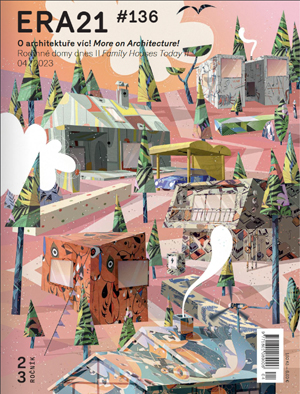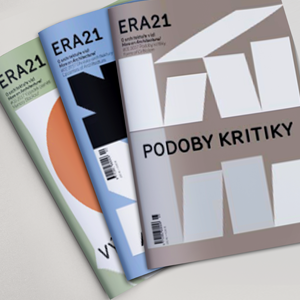Three individual buildings make up the church complex in the village of Lidečko. The baroque-style Church of St Katherine of Alexandria, the 16th century clergy house and a new parish community centre, which replaced the original 1950s cultural centre. The shape of the new parish centre follows the site boundary and delimits areas for outdoor activity. The symbolism of architecture as a processional passage underlines the meaning and function of the building. It begins with the public space in front of the church, continues along the walkway next to the covered outdoor space (with the inserted community centre), all the way to the back porch incorporating the remnants of the old stone wall. The community centre itself has variable layout options, a masonry load bearing structure, and larch shingle cladding. Building the Lidečko Parish Centre was a collective effort and the whole parish participated both financially and manually.
» entire articleFor the Slovak National Gallery building, a thorough renovation was long overdue—at least since the 2001 emergency closure of the exhibition space in the Bridging, a 1970s extension by architect Vladimír Dedeček connecting two opposite wings of the Gallery. Another part of the Gallery, the permanent exhibition this time, was closed off in 2012 due to inadequate conditions for the artwork. Finally, the library and the offices were shut down that same year. The renovation reconnects the disrupted functional relations, both inside the complex and with the neighbouring public areas. The main entrance axis from the old building’s courtyard is reaffirmed in the current layout, while a new axis, generated by Dedeček’s orthogonal grid, connecting the Gallery with the city centre, is integrated. Natural pedestrian paths are allowed to enter the ground floor and the courtyard. The Gallery becomes an open and welcoming institution.
» entire articleThis issue of ERA21 was originally meant to focus on Zoological Gardens. As summarised in the introduction text, different impulses led to us shifting our field of interest away from these places of worldly entertainment of looking into limited animal enclosures. The abstract act of erasing boundaries between people and wild animals crossed the popular glass divides of zoo exhibits. Animals range free now, in their natural territories—though these are greatly diminished due to human activity. And ERA21 is looking at ways of expanding these territories again, physically as well as semantically. It strives for emancipation from the subordination to the anthropocentric approach to the environment and for the discovery of new ecologies of interspecies coexistence. As it turns out, rewilding doesn't have to end in regression, instead it can stimulate a fascinating transgression.
» entire articlePetr Hájek is one of those architects who take the sound aspects very seriously in their work. Always focused on acoustics, ever since the first HŠH architects’ projects, he’s not afraid to have the building’s main conceptual idea guided by it. But recently his interest in sound and music peaked when he took to the stage with an experimental musical composition, as co‑author alongside notable musicians and conductors. Current projects, his students’ peculiar studio assignments, or composed architecture and urbanism were all things discussed in our conversation with Petr Hájek.
» entire articleUnbelievably, nineteen years will soon pass since the first time ERA21 magazine focused on the relationship between architecture, music and sound. The 04/2004 issue was a collaboration with architect and musician Ivan Palacký, who became ERA21’s first ever guest editor and issue curator. Following his example, we still often invite experienced professionals with unique insight to help us develop an issue.
» entire article

ERA21 vydává ERA Média, s. r. o. |
|
|
Phone: +420 530 500 801 E-mail: redakce@era21.cz |
|
| WEBdesign Kangaroo group, a.s. |